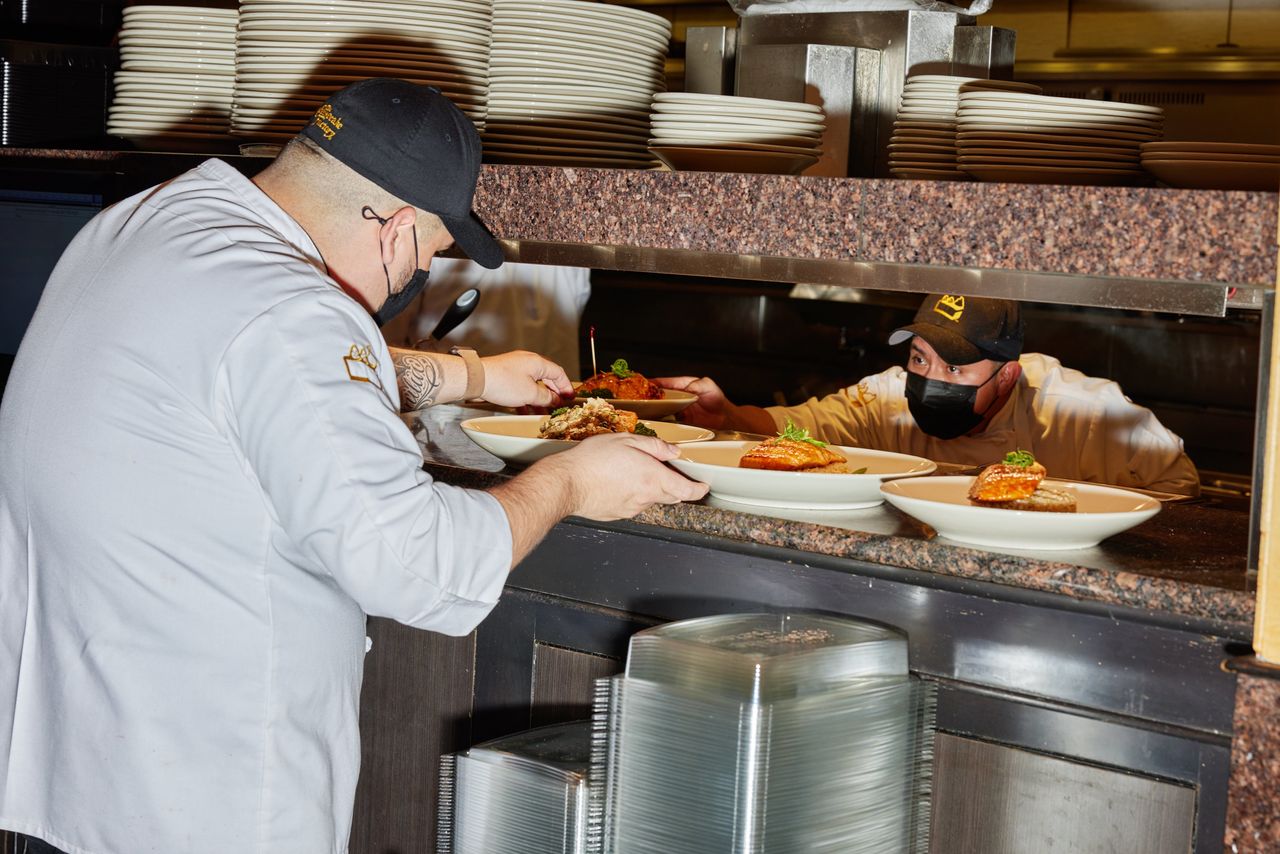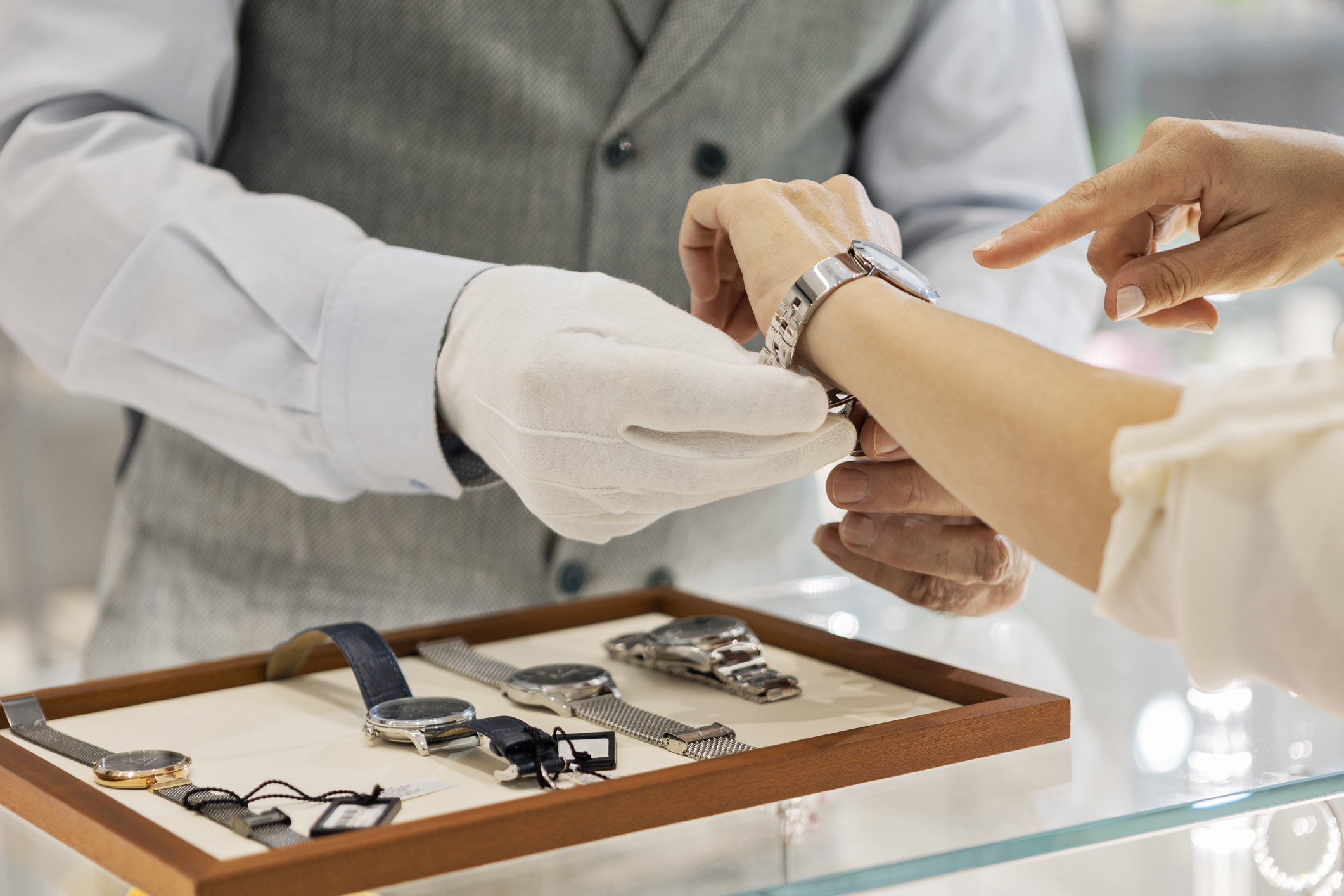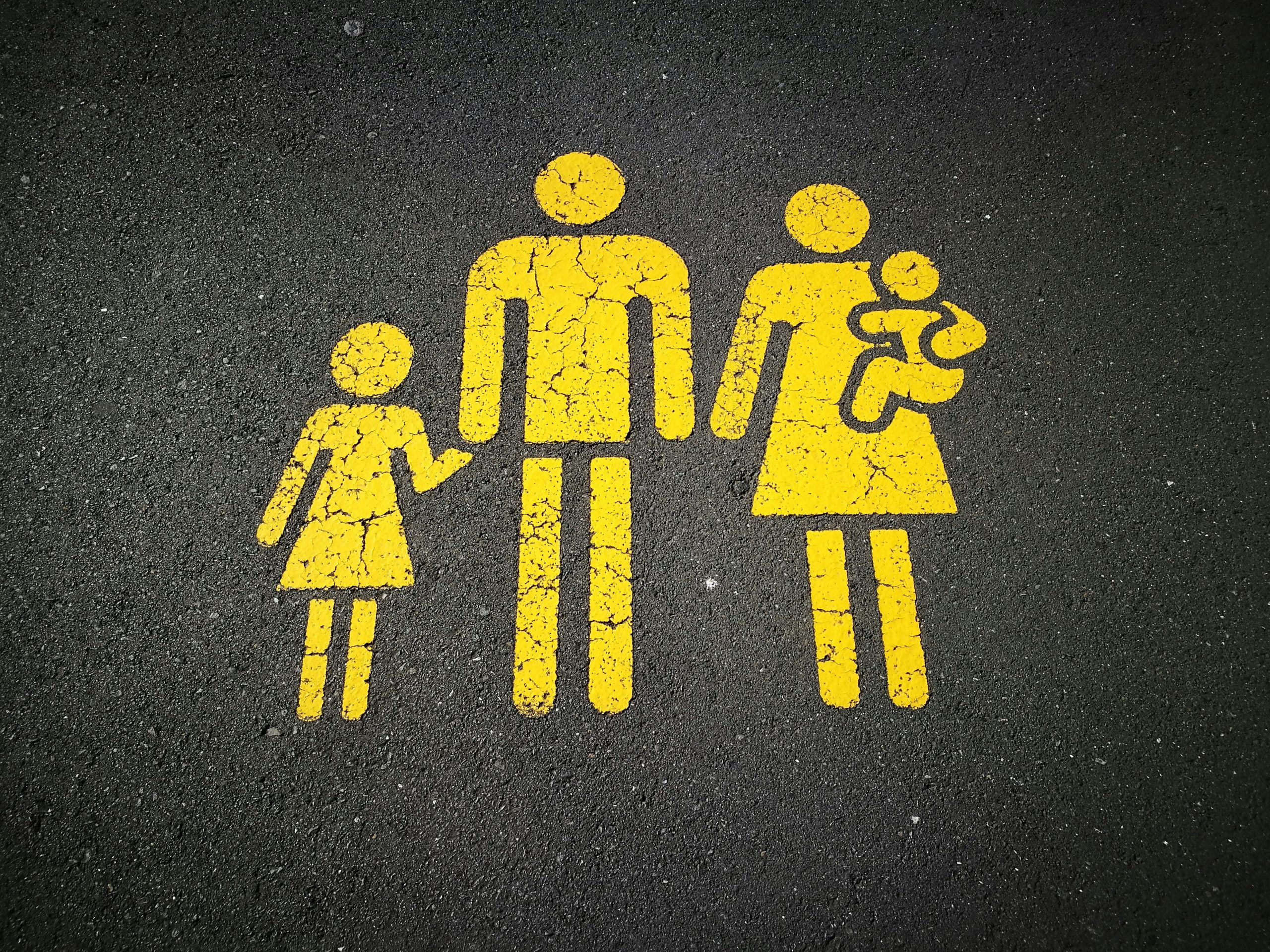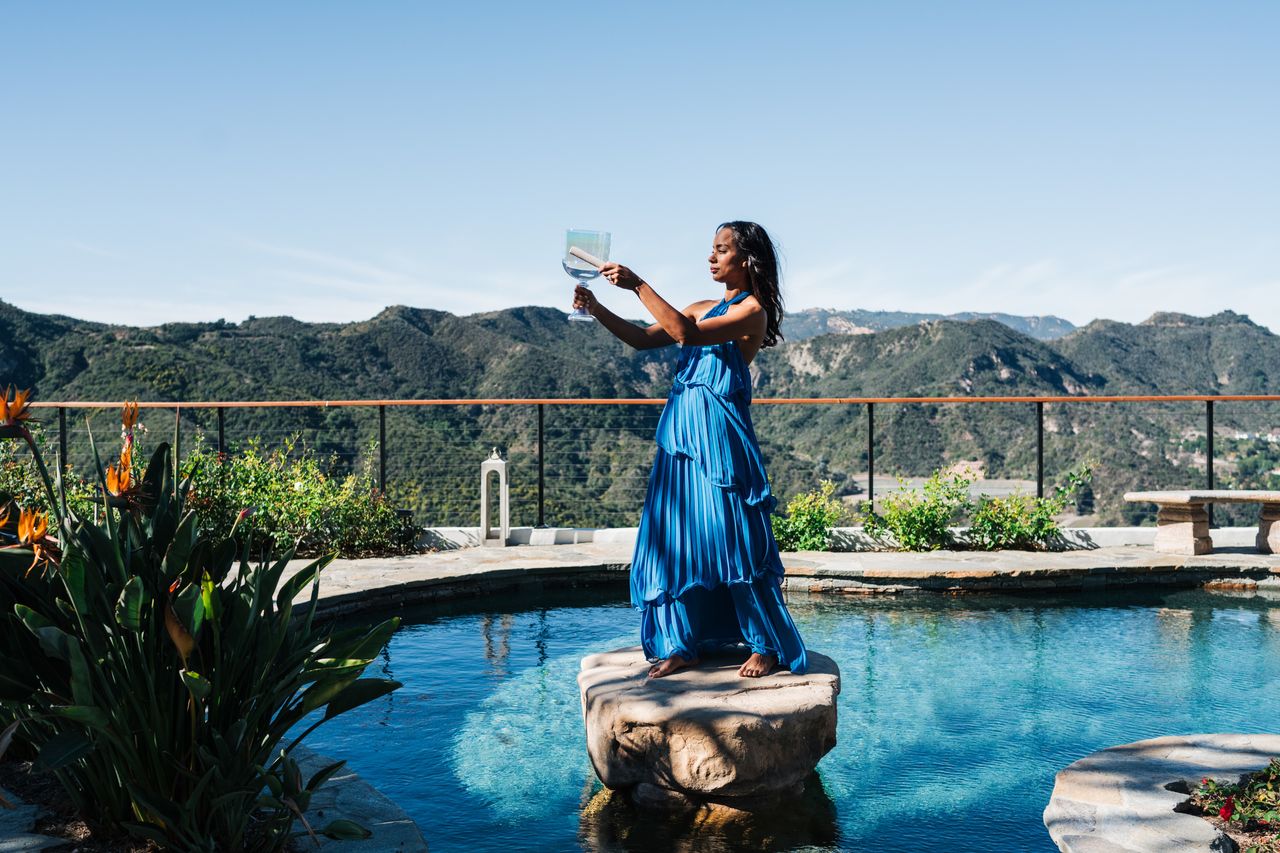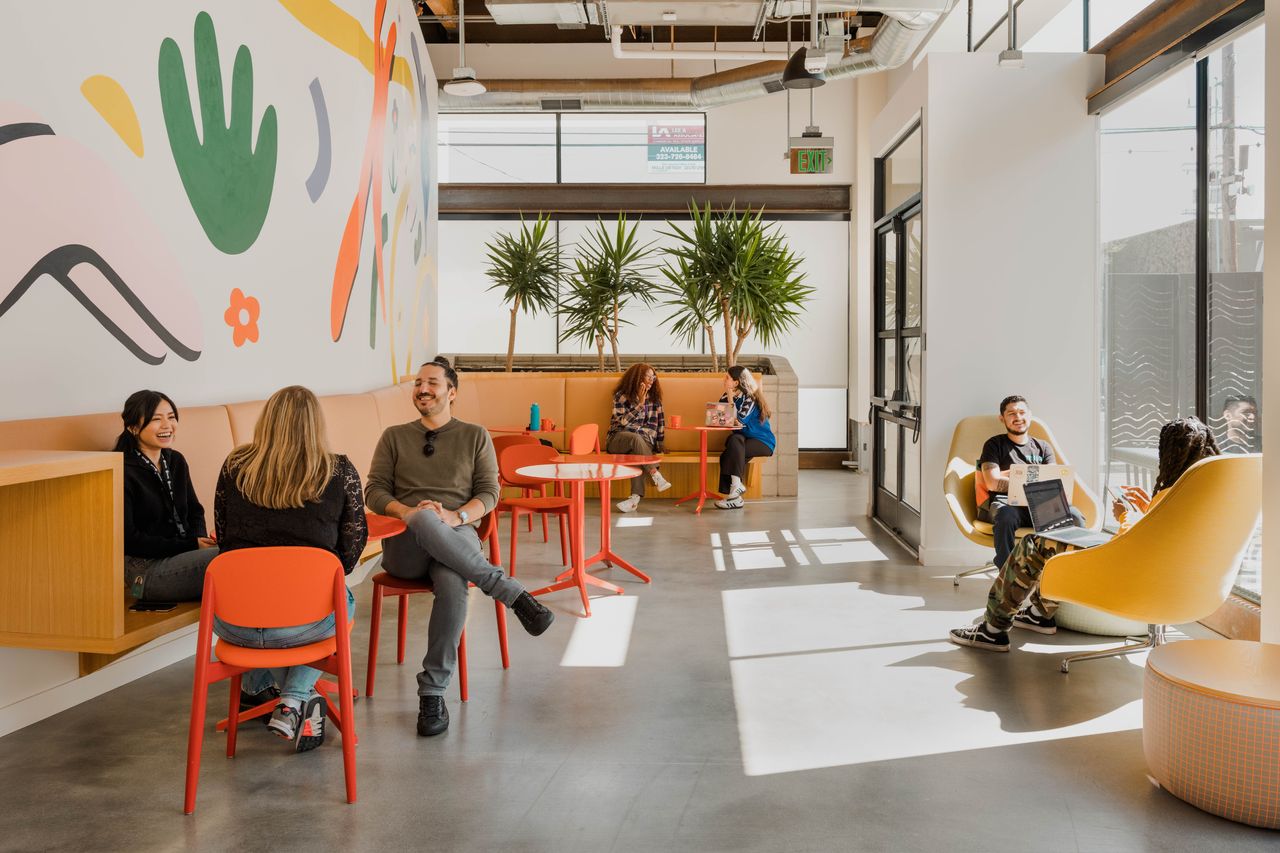A Table Outside? More Diners Say No Way
Restaurants say heat waves, smoke have hurt their outdoor dining business
Stretches of severely high temperatures across the U.S. are taking a toll on restaurants.
Customers are avoiding patios during heat waves, cutting into a key source of summertime sales for many restaurants, owners said. Visits in July and August declined from earlier in the year, industry data showed, with chains including Chuy’s and Cheesecake Factory reporting a decline in outdoor business this summer.
“No one’s sitting out in the patio at 100 degrees,” Steve Hislop, chief executive of Texas-based Chuy’s, said during an Aug. 3 earnings call.
Utility expenses are also rising as restaurants run air conditioning at full blast for long stretches of time, operators and industry groups said.
Temperatures climbing to the highest levels in recorded history this summer have hurt hospitality, sports, agriculture and many other businesses. In states such as Texas, weeks of days topping 100 degrees are expected to reduce overall economic productivity.
Restaurants are contending with heat and smoke as many operators are fighting for sales from cash-strapped consumers, and dealing with high inflation in food, labour and other costs.
Diners overall at restaurants in Arizona, Florida and Georgia dropped between 6% and 8% in the first part of August compared with last year’s period, according to OpenTable. The reservation tech company also recorded diner declines in other states running hot this summer, including Texas and North Carolina.
“This summer does feel different,” said Kelsey Erickson Streufert, chief public affairs officer for the Texas Restaurant Association trade group. “It’s a little tougher to get people to come out.”
Employees working at restaurants and bars dipped 1.5% in July compared with the month prior, with steep declines in cities such as San Antonio, New Orleans and Phoenix that recorded high temperatures during the month, according to Homebase, a small business workforce app. The declines likely stemmed from extreme temperatures disrupting consumer spending and foot traffic, Homebase said.
Worker advocates are increasingly making heat an issue in campaigns for improved conditions for restaurant workers. Some are pushing for better enforcement of existing standards and additional federal indoor heat regulations to provide employees breaks and water when temperatures rise.
“We’ve seen 86 degrees on the coolest side of the kitchen,” said Ariana Lingerfeldt, a cook at an Asheville, N.C., restaurant who is a member of the Restaurant Opportunities Centers United worker advocacy group, during an Aug. 9 event pushing for more heat standards. “The air conditioner is unable to keep up with the equipment.”
Some restaurant operators said they are giving their workers more water and rest breaks, since kitchen temperatures can climb steeply despite air-conditioning.
Many restaurants set up patios in the early days of the Covid-19 pandemic, and have come to rely on them to drive summer sales. New York City, for example, is poised to make expanded outdoor dining in roadways permanent from April to November, and supporters say patios have helped restaurants maintain sales and jobs.
Now, some restaurant owners said those patio sales are drying up when temperatures surge, or wildfire smoke blows.
“When the sun’s on it, it’s literally scalding out there,” said Marc Hochmuth, general manager of City Social restaurant in downtown Chicago, which has a patio. Hochmuth said his business dropped about 20% overall when temperatures soared this summer.
Zoe Dean-Neil, a 20-year-old Pennsylvania resident who was on vacation in Chicago in August, said she opted to eat inside in the air conditioning after a day walking around in the heat. “I don’t want to sit outside and sweat,” she said.
Smoke drifting into the U.S. from Canadian wildfires also affected business at restaurants in parts of the country earlier this summer. John DuBuque, a 31-year-old management consultant from Chicago, said he tried to have a glass of wine outside during one heavily smoky period in the city, and regretted it.
“It was not the vibe,” said DuBuque, who said he now makes more outdoor dining decisions based on the air quality index.
Restaurant owners are trying to work around the weather. Sue Rigler, owner of Hundred Mile Brewing Company in Tempe, Ariz., said she is misting and putting extra fans on her outside beer chilling units to keep them cool. She has also cut back on labor in response to slower sales that she attributes to the heat.
“July was a really hard month,” Rigler said. “We finally got a break at 108, and they call that a break.”
Tom Hutchinson, owner of La Posta de Mesilla and Hacienda de Mesilla in New Mexico, said his hotel and restaurants are promoting cold beers and margaritas to attract customers. He is also hoping to keep people coming to the outdoor space surrounding their adobe building at night when temperatures may fall to the 90s.
“We don’t have humidity in our state and you can tolerate that,” he said.
Longer term, restaurant operators are trying to adjust to more climate-driven variables.
Avram Hornik, owner of the FCM Hospitality group of restaurants, bars and outdoor pop-up venues in Philadelphia, said his sales are down 30% this summer because of weeks of heat and rain. Smoky conditions in June didn’t help, he said.
“I look at it such as being a farmer. The weather controls all,” he said.
 Copyright 2020, Dow Jones & Company, Inc. All Rights Reserved Worldwide. LEARN MORE
Copyright 2020, Dow Jones & Company, Inc. All Rights Reserved Worldwide. LEARN MORE
This stylish family home combines a classic palette and finishes with a flexible floorplan
Just 55 minutes from Sydney, make this your creative getaway located in the majestic Hawkesbury region.
People spend a lot of money on all sorts of things, only to later ask themselves: Why?
While it may be true that money can’t buy happiness, that doesn’t stop people from trying.
And then wishing they hadn’t.
Many of us have had a big-ticket expenditure that we later come to regret. Maybe it’s something meant to convey status, which we realise later did nothing of the sort. Maybe it was to fulfil dreams of a luxury lifestyle, only to discover that we’ve bought a bottomless money pit.
We asked Wall Street Journal readers to share their stories of pricey purchases that ultimately led to disappointment. Below are some of their stories and reflections—with some free advice to their younger selves.
The wristwatch of his dreams
“It was back in day of wingtip shoes, white shirts and red ties,” says Bryan Desloge, who began his career at IBM in 1984. And like many rookie employees, Desloge wanted to fit in. “I bought suits. I took my earring out. I cut my hair and I registered in the Republican Party,” he says. To complete the look, he paid over $7,000 for the wristwatch of his dreams—a Rolex Submariner. It was a hefty sum, considering he was making roughly $18,000 a year.
Now 64 and retired, Desloge says his younger self saw the stainless-steel watch as a status symbol. “The older guys had nice dress watches already, while I wore a Casio or a Timex.” Just two years after buying the Rolex, however, Desloge realised the timepiece was impractical for him. “The Rolex is great, but I don’t want to look at a clock face,” he says, “and the glow-in-the-dark hands are hard to read at night.”
Desloge, who lives in Tallahassee, Fla., recently tried to give the Rolex to his son, who turned him down. So it remains tucked away in favor of a Garmin smartwatch, which has a fitness tracker, alerts and email, among other features. Purchased for about $500, the Garmin can multitask in ways his Rolex cannot. “I will probably wear that watch for the rest of my life,” Desloge says.
Cabin fever
The family called it “the little brown house,” says Michael Kotas of his vacation cabin in the mountains overlooking Tucson, Ariz. In 2005, Kotas and his wife paid $120,000 for the 1950s cabin, and it needed a lot of work.
“We bought it from an older couple, who had dark rugs and wood paneling,” says Kotas, who is now in his mid-60s and retired from a job in technology sales. He redid the cabin “with a cool Manhattan vibe,” updated the electrical wiring and corrected a flooding issue in the basement. In all, Kotas estimates he spent $60,000 in upgrades.
But his financial headaches were far from over.
Even though Kotas owned the cabin, the federal government owned the land it sat on, since it was located within the Coronado National Forest. Leasing the land cost $800 a year when the cabin was purchased, but eventually grew to $3,600 a year by the time it sold.
During that time, two fires came within 100 yards of the cabin, jacking up Kotas’s fire-insurance premiums. Then, a species of bark beetle attacked ponderosa pines there, and the Forest Service required cabin owners to remove infested trees around their property, costing $1,000 to $1,200 a pop. “I counted all my trees around my house and thought, ‘I can’t afford this.’ ”
Over time, Kotas’s children didn’t want to go to the cabin anymore, saying “there was nothing to do,” he says. “We ended up spending about five nights a year there for the last several years.” Kotas, whose year-round home also is in Tucson, came to the realisation that he wasn’t getting his money’s worth. “It became an albatross,” he says.
The tipping point came when a man parked his truck just 100 feet from the cabin and lived out of his vehicle on the side of the road. Kotas sold the cabin in 2022 for $195,000.
“I would probably never buy a vacation home again,” he says. “It was a tough lesson to learn. I wish the [new] buyers well, but all I can say is, ‘Good riddance!’ ”
RV to nowhere
After retiring from a career in ophthalmology, Gordon Preecs bought a large pickup truck in 2013 and a 22-foot travel trailer in 2017 with the dream that he and his wife, Connie Preecs, would visit national parks around the country. Combined, the new vehicles cost around $50,000.
Living in Seattle at the time, the couple started out by taking the RV on short trips, such as an event for woodcarvers in Washington state. It didn’t take long for them to feel pinched in a 120-square-foot RV. “I thought we’d have our own hotel” with an RV, says Preecs, who is now 75 and living in Round Rock, Texas. “But we had to just shove things in there. The kitchen counter was hand’s breadth wide, and the bathroom was like a phone-booth shower. If I dropped the soap, I couldn’t pick it up.”
Three years after purchasing the trailer, Preecs and his wife relocated to Texas to be closer to their grandchildren. Still, they were able to visit Grand Teton and Yellowstone national parks in the Northwest. That’s when they felt the financial pinch of RV ownership.
“At 6 miles per gallon and $60 to $80 a night at RV parks, the expenses really added up,” he says. “We found it was an inefficient way to travel.” Some of the RV parks are located in funky, backwater places, he says. And setup and breakdown at every stop became a hassle. “You want to be free, but you’re not.”
In 2020, they sold the trailer, which had less than 5,000 miles of use, and the pickup for a combined $32,000. With the proceeds, Preecs bought a Tesla.
Outfitted and outwitted
As a vintner in California, much of Pam Starr’s work takes place outside among the grape vines. “I live in jeans and winemaker vests, T-shirts and sometimes boots,” says the 63-year-old. “So I can tear my clothes on a vine or get barrel slime on me” and it doesn’t really matter.
A few years ago, a well-heeled friend with an eye for fashion convinced Starr, who lives in Napa, to join her in San Francisco for a meeting with her couturier—a person who creates luxury clothing to the client’s specifications. The friend had told Starr that she wouldn’t have to buy anything, but this particular couturier was very persuasive, Starr recalls.
For example, the couturier held up a gauzy swimsuit coverup with white sequins and said, “You have to wear this swimsuit coverup by the pool.” Starr paid $1,800 for a custom coverup, but later it hit her: “I don’t wear a coverup when I’m at the pool because I’m actually in the pool.” To this day, it has never been worn. Starr says she spent another $1,800 for an off-the-shoulder silk shirt with three-quarter length sleeves.
The quality of the clothing was low, Starr says. “That silk shirt turned out to be my most disappointing piece,” she says. It didn’t clean well, and hasn’t retained its shape. Many of the pieces she purchased haven’t held up well, she says, even though she rarely wears them. “Out of the 15 items I had made for me, I loved maybe three,” Starr says. “That’s more than $20,000 worth of clothes, and I should have gotten more out of them.”
If she could go back in time, Starr says, she would say to herself, “ ‘Listen, Pam. Pick two things and start slowly. If you like them, you can expand into other things.’ ” Also, she would pause to ask herself how often she would actually wear the clothing.
“Because of a friend, I ended up in a couture shop,” Starr says. “In that world, it’s uncharted territory for me. The couturier pulls you in really hard.” Knowing what she knows now, Starr says, “if I needed someone to design a gown for me, I wouldn’t go back there. I would go to a seamstress locally.”
Consumers are going to gravitate toward applications powered by the buzzy new technology, analyst Michael Wolf predicts
Just 55 minutes from Sydney, make this your creative getaway located in the majestic Hawkesbury region.









